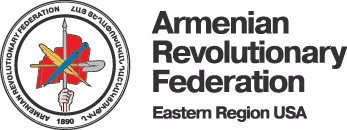Backyard Nurseries Provide Much-Needed Income in Rural Areas

By Kristine Hovsepyan
AGHAVNAVANK, Armenia—In Armenia, the life of a border village farmer comes at a price. The average farmer working close to the border relies on a soldier guarding the country from dusk till dawn, as he continues to work and provide for his family.
In the days just before the recent tragic clashes on the eastern border of Nagorno-Karabagh (Artsakh/NKR) and Azerbaijan, Armenia Tree Project (ATP) visited Aghavnavank, a village in Tavush, 130 kilometers from Yerevan. This stunning village is adjacent to the Getik River Valley, where ATP’s Backyard Nursery Micro-Enterprise Program was launched in 2004.
Some of the best tree growers were in Aghavnavank, so ATP concentrated efforts there in recent years. In this program, families are trained to grow tree seedlings on plots of land in their backyards, and ATP purchases the seedlings when the trees are ready to be planted in the nearby forests.
“This model is appealing because it rewards family farmers for good work, when we pay for trees that have been well cared for,” explains ATP Manager Arthur Harutyunyan, who oversees this program. “We even received an Energy Globe Award for Sustainability at the European Parliament because of this program’s positive impact on the three aspects of sustainability: people, profit and planet.”
The program also has a presence in the Shiraz and Gegharkounik regions. Six families in Keti Village are growing trees that should produce seedlings in two years; and four families in the mountainous village of Jambarak are part of the program. The uniqueness of this village is the climate. These seedlings mature much later because of the high altitude of 2,000 meters above sea level, which allows ATP to plant the trees later into the season when work in the southern regions is completed.
“The Backyard Nursery Program serves several needs,” says Harutyunyan, “providing additional varieties of seedlings for communities with different weather conditions, educating people about planting and tree care, and compensating them for growing high quality seedlings for our new forests.”
In Aghavnavank, the program has created jobs for five households and continues to be a steady source of income for them. Nearly 80 percent of residents were relocated from Azerbaijan in the early 1990’s.
“We moved to Aghavnavank after the Baku pogroms,” recounts Kamo Mirzoyan, a tree grower who explains what makes living in Aghavnavank special for him. The steady income provided by ATP has helped him renovate his house and begin constructing a guest house for tourists who pass through this scenic village.
“Each family in Aghavnavank is growing around 800 trees, and our goal is to expand the program as we train new families on tree growing,” says Harutyunyan. “As the recent four-day Karabagh war proved, while soldiers watch the border, a nation stands behind them and continues to grow and prosper. We’re proud that ATP plays some role in this cooperation with rural communities.”
Since its inception in 1994, ATP has planted more than 4.9 million trees, established three nurseries and two environmental education centers, and has greened villages, churches, parks, and open spaces throughout Armenia. In the process, the organization has provided employment for hundreds of people and vital resources to thousands of villagers. For more information, visit www.armeniatree.org.
Source: Armenian Weekly Mid-West


